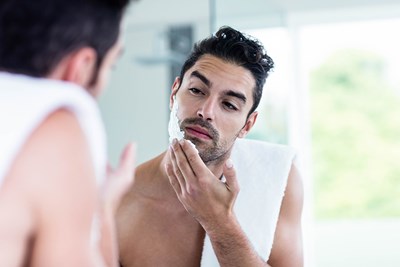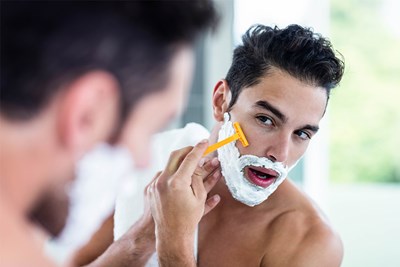Shaving is the most common method of hair removal because it’s quick, easy, and affordable. Unfortunately, sometimes you have to suffer the consequences of convenience—such as razor burn.
If you’re someone who seems to experience irritation after almost every shave, the following tricks will protect your skin and keep that annoying razor burn at bay.
Exfoliate regularly.
Exfoliation is an especially a good idea for people who tend to have chronic razor burn. Before picking up a razor, use a loofah and your favorite scrub in order to exfoliate. This will remove dead skin cells and bring out the ingrown hair that causes razor bumps. If you are shaving your face, be sure to use a product that's specifically designed for its sensitive skin.
Shave after showering.
When hair is soft, it is easier to remove with a razor. A hot shower is a natural way to soften your hair and open your pores—making things easier to shave and reducing your risk of razor burn.
Shave with a clean blade.
When shaving, you should always use a quality razor with a sharp blade. A dull razor is one of the most common reasons for razor burn—you should replace yours every five to seven shaves in order to avoid this.
It’s also important to rinse the blade under hot water before you start shaving and after every few swipes. Rinsing the blade will remove shaving cream and hair that may get in the way of a clean cut.
Don’t dry shave.
Shaving dry is basically asking for razor burn. Instead, use shaving creams that have a high concentration of moisturizers. Not only is it better for your skin, but shaving cream with moisturizer and lubricant also helps the razor glide over your skin for a smoother, irritation-free shave. A good rule of thumb is to apply the cream and let it sit for about a minute before you start shaving—giving the hair time to become soft and wet.
Shave in the direction your hair grows.
You should always shave “with the grain”—which means the direction your hair is growing. When you shave against the grain, it's harsher on the skin and you increase your chances for ingrown hairs, razor burn, and cuts.
Shave in short, quick strokes.
In order to reduce the pressure on your skin—one of the major reasons for razor burn—shave in short, quick strokes. A razor has enough weight to cut your hair, so you don’t need or want any added pressure to shave—especially if the area is sensitive.
Use cold water after shaving.
Once you are done shaving, rinse the area with cold water. Cold water seals pores and prevents ingrown hair growth. Use a clean towel to pat yourself dry afterwards.
Use an aftershave lotion or balm.
After your shave, apply an aftershave lotion or balm to soothe and calm the skin. If you prefer, you can also use a simple glycerin-based moisturizer—some folks may find that even aftershave causes skin irritation.



